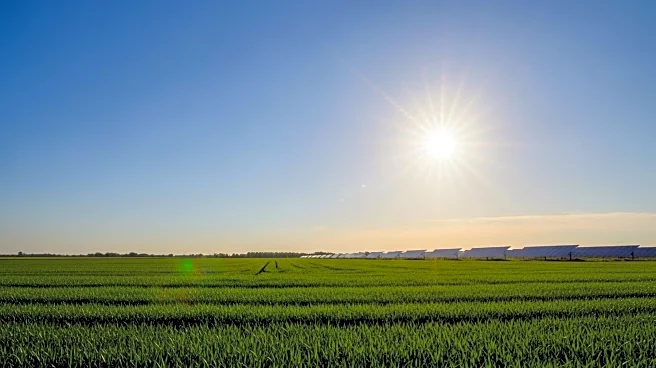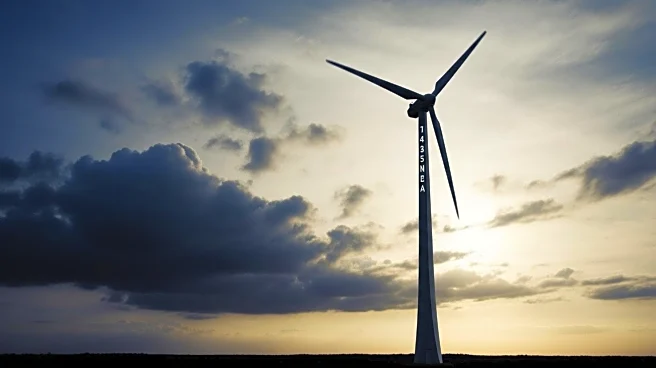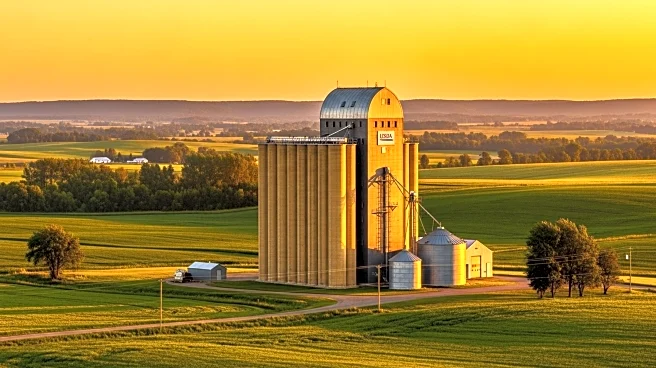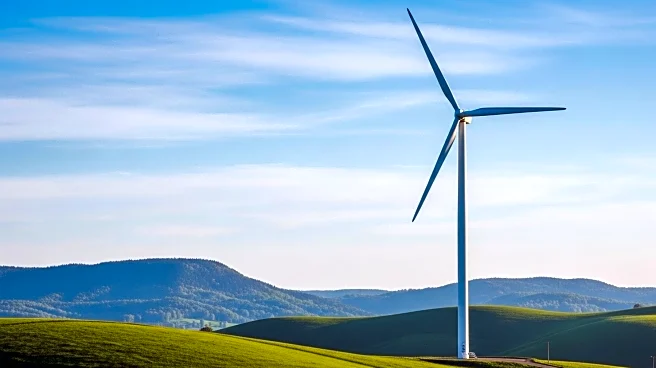What's Happening?
The United States Department of Agriculture (USDA) has announced a policy change that will cease funding for new solar projects on farmland. This decision is driven by concerns over the loss of farmland, as solar farms are perceived to make land more expensive and less accessible to traditional farmers. Despite these concerns, some companies, like Silicon Ranch Corporation, argue that solar energy and agriculture can coexist. Silicon Ranch operates a farm in Franklin, Kentucky, where sheep graze beneath solar panels, maintaining vegetation and producing grass-fed meat. Critics of solar farms argue that they contribute to farmland loss, with Tennessee reportedly losing over 1.2 million acres and potentially losing 2 million more by 2027. However, proponents like Matt Beasley, Chief Commercial Officer at Silicon Ranch, cite studies indicating that solar energy does not threaten agriculture but rather offers opportunities to maintain agricultural land while producing renewable energy.
Why It's Important?
The USDA's decision to halt funding for solar projects on farmland has significant implications for the renewable energy sector and agricultural communities. On one hand, it addresses concerns about farmland accessibility for new and young farmers, which is crucial for sustaining traditional agriculture. On the other hand, it may slow the growth of solar energy, which has been the fastest-growing energy source in the U.S. over the past decade. This policy change could impact companies that integrate solar energy with agriculture, potentially affecting their business models and economic viability. The decision also highlights the ongoing debate between preserving farmland and advancing renewable energy initiatives, which are both critical for environmental sustainability and economic growth.
What's Next?
The USDA's policy shift may prompt solar energy companies to explore alternative funding sources or adjust their strategies to align with the new regulations. Stakeholders in the agricultural and renewable energy sectors may engage in discussions to find a balance between land preservation and energy production. Additionally, the policy could lead to increased advocacy from both sides, with traditional farmers seeking more support for land access and solar companies emphasizing the benefits of integrated energy-agriculture models. The decision may also influence legislative actions at state and federal levels, as policymakers consider the broader implications for energy policy and agricultural sustainability.
Beyond the Headlines
The USDA's decision raises ethical and cultural questions about land use priorities and the role of government in supporting renewable energy. It challenges the notion of whether energy production should take precedence over traditional farming practices, especially in regions where agriculture is a key economic driver. The policy also underscores the importance of domestic manufacturing, as the USDA will not fund projects using panels made by foreign adversaries. This aspect highlights national security concerns and the push for American-made components in renewable energy projects.












